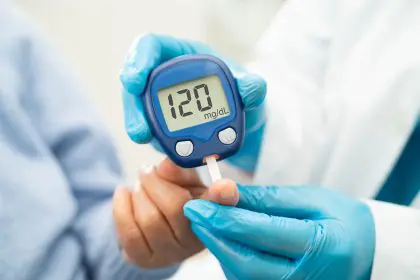Diabetes can affect every part of your life, but one of the most severe and dangerous complications is a diabetic coma. It’s a medical emergency that demands immediate attention, and if left untreated, it can be fatal. Understanding what it means to experience a diabetic coma isn’t just important for people diagnosed with diabetes, but also for family members, caregivers, and friends who may find themselves in a position to help during an emergency.
What is a diabetic coma?
A diabetic coma is a life-threatening condition that happens when someone with diabetes either has dangerously high (hyperglycemia) or dangerously low (hypoglycemia) blood sugar levels. Both conditions can make the person unconscious, and if left untreated, a diabetic coma can cause permanent brain damage or even death.
Diabetic comas happen when the body’s systems are unable to cope with extreme blood sugar levels, and it’s a sign that diabetes is not under control. Whether it’s due to the inability to monitor blood glucose levels or complications in diabetes management, a diabetic coma is an alarming result of diabetes that must be taken seriously.
What leads to a diabetic coma?
There are several factors that can lead someone to experience a diabetic coma. For those living with diabetes, it’s crucial to recognize these factors to prevent such an event.
1. Hyperglycemia: The danger of too much sugar
Hyperglycemia occurs when blood sugar levels become excessively high. This is more common in people with type 1 diabetes but can happen to anyone with diabetes. Some causes of hyperglycemia include forgetting to take insulin, not taking the right dose of medication, eating too many carbohydrates without adjusting insulin levels or being under stress or ill.
When hyperglycemia is prolonged, it can lead to two dangerous conditions:
- Diabetic ketoacidosis (DKA): Mostly found in people with type 1 diabetes, DKA occurs when the body starts to break down fat at an uncontrollable rate. This releases acids — known as ketones — into the blood, leading to a dangerous buildup that can cause unconsciousness.
- Hyperosmolar hyperglycemic syndrome (HHS): This is more common in people with type 2 diabetes. HHS occurs when blood sugar levels soar to extremely high levels, causing severe dehydration, confusion and eventually coma.
Both conditions are emergencies and require immediate treatment to prevent a diabetic coma.
2. Hypoglycemia: When there’s too little sugar
On the flip side, hypoglycemia can also lead to a diabetic coma. This occurs when blood sugar levels drop too low, typically below 70 mg/dL. People with diabetes often experience this after taking too much insulin, missing a meal or engaging in strenuous physical activity without adjusting their medication or diet.
When blood sugar drops too low, the brain — which relies on glucose for energy — cannot function properly. If untreated, hypoglycemia can quickly progress from confusion and dizziness to seizures, unconsciousness and a diabetic coma.
Signs that a diabetic coma is coming
Whether blood sugar is too high or too low, there are warning signs that a diabetic coma might be on the horizon. Knowing these symptoms can save lives, so it’s important to recognize them early.
Symptoms of hyperglycemia leading to a diabetic coma
- Frequent urination
- Excessive thirst
- Dry mouth
- Blurred vision
- Fatigue or drowsiness
- Confusion
- Rapid breathing
- Nausea and vomiting
- Fruity-smelling breath (a sign of DKA)
Symptoms of hypoglycemia leading to a diabetic coma
- Shakiness
- Sweating
- Hunger
- Confusion
- Dizziness
- Slurred speech
- Irritability or mood swings
- Weakness or fatigue
- Loss of consciousness
If any of these symptoms appear, it’s critical to check blood sugar levels immediately. If blood sugar is dangerously high or low and you are unable to control it, seek medical attention right away.
What happens during a diabetic coma?
Once someone slips into a diabetic coma, they are unconscious and unresponsive to outside stimuli. Their brain — deprived of proper glucose levels or overwhelmed by ketones — shuts down, which can cause long-term damage. While in a coma, the person cannot speak or move and vital signs can become erratic.
Family members and caregivers need to understand that a diabetic coma is a medical emergency. Immediate intervention is required, and calling 911 or taking the person to the emergency room is essential.
Doctors will conduct various tests to determine the cause of the coma — whether it’s due to hyperglycemia or hypoglycemia — and treat it accordingly. Treatments may include administering intravenous insulin, fluids or glucose — depending on the individual’s condition.
Emotional impact of experiencing or witnessing a diabetic coma
For those who survive a diabetic coma, the experience is often deeply emotional. Many feel a renewed sense of vulnerability, knowing that their life could have been at risk. Fear of future comas may lead to heightened anxiety or depression — especially if the person struggles to manage their diabetes afterward.
Families and caregivers may also experience their own emotional challenges. Watching a loved one go through a diabetic coma can be terrifying, and the uncertainty of the situation can cause feelings of helplessness and guilt.
Coping with these emotions is critical. Many survivors and their families find comfort in diabetes support groups or counseling, where they can share their experiences and learn strategies to cope with the fear and anxiety that often follow a diabetic coma.
Preventing a diabetic coma
The best way to prevent a diabetic coma is to manage diabetes effectively. This means regularly checking blood sugar levels, taking medication as prescribed and maintaining a healthy diet and exercise routine. Keeping a close eye on how stress, illness and physical activity affect blood sugar is also important.
1. Stick to a consistent medication plan
Taking insulin or diabetes medication on time and in the correct doses is the most important step to preventing a diabetic coma. Never skip doses — even when you feel well.
2. Monitor blood sugar regularly
Frequent blood sugar checks can alert you when levels are trending too high or too low. This is crucial to avoiding the extremes that lead to coma.
3. Recognize early warning signs
Knowing the early signs of hyperglycemia and hypoglycemia can help you take action before the situation becomes critical.
4. Prepare for emergencies
Having a plan in place, including keeping fast-acting glucose or insulin nearby and educating family members or coworkers about what to do in an emergency, can make all the difference.
Taking control of diabetes to avoid a diabetic coma
A diabetic coma is one of the most dangerous complications of diabetes, but it’s preventable with good management. Understanding the causes, symptoms and treatments for diabetic coma is critical for people with diabetes and their loved ones. Learning to manage your condition daily, recognize warning signs early and respond quickly in an emergency can be the key to avoiding this life-threatening event.
No one should face the fear of a diabetic coma alone. By staying informed and taking proactive steps to control diabetes, people can prevent this serious complication and live healthier, more confident lives.
This story was created using AI technology.
















